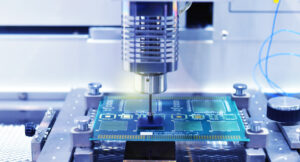Microfluidic technology, also known as lab-on-a-chip technology, is a rapidly evolving field that combines physics, engineering, and biology to manipulate and control small volumes of fluids within microscopic channels. This technology offers a range of applications and has the potential to revolutionize various industries, including healthcare, biotechnology, environmental monitoring, and more.
At its core, microfluidic technology focuses on miniaturizing and integrating laboratory functions onto a single chip. These chips, often made of materials such as glass or polymers, contain intricate networks of channels, valves, pumps, and sensors that enable precise control and manipulation of fluids at the microliter or even nanoliter scale.
The advantages of microfluidic technology are numerous. First and foremost, it allows for the handling of small sample volumes, reducing the consumption of expensive reagents and enabling high-throughput experimentation. Additionally, the small dimensions and precise control of fluid flow in microfluidic devices enable faster reaction times, enhanced sensitivity, and improved efficiency compared to traditional laboratory setups.
In the healthcare industry, microfluidics has the potential to transform diagnostics and personalized medicine. Microfluidic devices can be designed for rapid and sensitive detection of various analytes, including pathogens, biomarkers, and genetic material. These devices enable point-of-care testing, making healthcare more accessible and efficient.
In the field of biotechnology, microfluidics plays a crucial role in areas such as cell analysis, drug discovery, and genomics. Researchers can manipulate individual cells, perform high-throughput screenings, and study cellular interactions with precise control and automation. This technology accelerates the pace of research and development, opening new possibilities for scientific breakthroughs.
Microfluidics also finds applications in environmental monitoring, food safety, and industrial processes. It can be used for on-site analysis of water quality, detection of contaminants, and monitoring of chemical reactions. The ability to integrate multiple analytical steps into a single chip simplifies complex workflows and reduces the need for extensive laboratory infrastructure.
As microfluidic technology continues to advance, it offers immense potential for innovation and interdisciplinary collaborations. Researchers, engineers, and industry professionals can leverage this technology to develop novel devices, improve analytical capabilities, and address pressing challenges in various fields.
At our organization, we are at the forefront of microfluidic technology, with a dedicated team of experts and state-of-the-art facilities. We welcome partnerships and collaborations to explore the possibilities of this cutting-edge technology and create impactful solutions together.
Contact us today to discuss how we can work together to harness the power of microfluidics and drive innovation in your industry.


